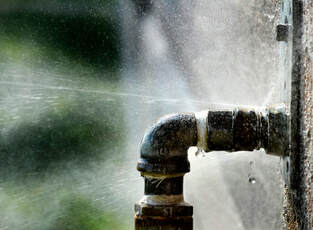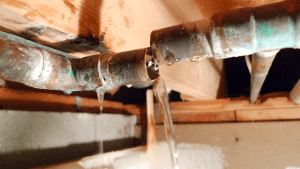In this article down the page you can locate a lot of really good information and facts relating to Top leak detection hacks.

Early detection of dripping water lines can minimize a possible calamity. Some tiny water leaks might not be noticeable.
1. Check Out the Water Meter
Every home has a water meter. Inspecting it is a proven manner in which aids you discover leaks. For beginners, switch off all the water sources. Make certain nobody will certainly purge, use the faucet, shower, run the cleaning device or dishwasher. From there, most likely to the meter and watch if it will certainly change. Given that nobody is using it, there must be no movements. If it relocates, that indicates a fast-moving leak. If you find no adjustments, wait a hr or 2 and inspect back once again. This means you might have a slow leak that might also be below ground.
2. Check Water Consumption
Examine your water expenses and also track your water consumption. As the one paying it, you need to notice if there are any discrepancies. If you find sudden changes, regardless of your consumption being the same, it implies that you have leaks in your plumbing system. Bear in mind, your water costs should fall under the exact same variety monthly. An abrupt spike in your costs shows a fast-moving leak.
A stable boost every month, also with the very same practices, shows you have a slow leakage that's additionally gradually escalating. Call a plumber to extensively examine your residential or commercial property, specifically if you feel a cozy area on your flooring with piping beneath.
3. Do a Food Coloring Test
When it comes to water consumption, 30% comes from bathrooms. If the color in some way infiltrates your bowl throughout that time without flushing, there's a leakage between the storage tank and bowl.
4. Asses Exterior Lines
Don't fail to remember to examine your exterior water lines as well. Should water leak out of the link, you have a loose rubber gasket. One little leak can lose tons of water and spike your water costs.
5. Examine and Assess the Situation
House owners should make it a practice to inspect under the sink counters and also also inside cabinets for any kind of bad odor or mold and mildew growth. These two red flags show a leak so timely interest is needed. Doing routine assessments, even bi-annually, can save you from a significant issue.
Examine for stainings and deteriorating as a lot of appliances and also pipelines have a life span. If you think dripping water lines in your plumbing system, don't wait for it to escalate.
Early detection of dripping water lines can minimize a prospective calamity. Some little water leakages may not be noticeable. Examining it is a proven way that helps you discover leaks. One little leakage can waste heaps of water as well as spike your water bill.
If you suspect leaking water lines in your plumbing system, don't wait for it to escalate.
WARNING SIGNS OF WATER LEAKAGE BEHIND THE WALL
PERSISTENT MUSTY ODORS
As water slowly drips from a leaky pipe inside the wall, flooring and sheetrock stay damp and develop an odor similar to wet cardboard. It generates a musty smell that can help you find hidden leaks.
MOLD IN UNUSUAL AREAS
Mold usually grows in wet areas like kitchens, baths and laundry rooms. If you spot the stuff on walls or baseboards in other rooms of the house, it’s a good indicator of undetected water leaks.
STAINS THAT GROW
When mold thrives around a leaky pipe, it sometimes takes hold on the inside surface of the affected wall. A growing stain on otherwise clean sheetrock is often your sign of a hidden plumbing problem.
PEELING OR BUBBLING WALLPAPER / PAINT
This clue is easy to miss in rooms that don’t get much use. When you see wallpaper separating along seams or paint bubbling or flaking off the wall, blame sheetrock that stays wet because of an undetected leak.
BUCKLED CEILINGS AND STAINED FLOORS
If ceilings or floors in bathrooms, kitchens or laundry areas develop structural problems, don’t rule out constant damp inside the walls. Wet sheetrock can affect adjacent framing, flooring and ceilings.
https://www.servicemasterbyzaba.com/blog/how-to-detect-water-leakage-in-walls/

Do you like reading about Locating water leaks? Leave a comment directly below. We would be glad to hear your views about this write up. Hoping that you visit us again before long. Do you know anybody else who is interested by the niche? Feel free to share it. We value reading our article about Detecting hidden plumbing leaks.